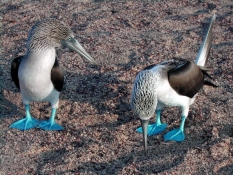Queens
College/CUNY
Education Unit
Fall 2009
Science Content Recommendations from NCATE and NSTA
| Elementary - generalist | Elementary - middle | All Secondary | Secondary - Biology | Secondary - Chemistry | Secondary - Earth, Space | Secondary - Physics |
A. Recommendations for Elementary Generalists
A.1. Elementary teachers without a science specialization should be prepared to teach science with a strong emphasis on observation and description of events, manipulation of objects and systems, and identification of patterns in nature across subjects. They should be prepared to effectively engage students in concrete manipulative activities that will lead to the development of desired concepts through investigation and analysis of experience. Elementary generalists should be prepared to lead students to understand the unifying concepts of science , including:
- Multiple ways we organize our perceptions of the world and how systems organize the studies and knowledge of science.
- Nature of scientific evidence and the use of models for explanation.
- Measurement as a way of knowing and organizing observations of constancy and change.
- Evolution of natural systems and factors that result in evolution or equilibrium.
- Interrelationships of form, function, and behaviors in living and nonliving systems.
A.2. At the elementary level in particular, the sciences should be interwoven to develop interdisciplinary perspectives. In relation to biology, elementary generalists should be prepared to lead students to understand:
- Features distinguishing living from nonliving systems.
- Characteristics distinguishing plants, animals, and other living things.
- Multiple ways to order and classify living things.
- Ways organisms function and depend on their environments
- Ways organisms are interdependent.
- Reproductive patterns and life cycles of common organisms.
- Growth, change, and interactions of populations to form communities.
A.3. In the physical sciences, elementary generalists should be prepared to lead students to understand:
- Properties of matter such as mass, solubility, and density.
- Combinations of matter to form solutions, mixtures, and compounds with different properties.
- Variations in the physical and chemical states of matter and changes among states.
- Ordering and classification of matter and energy and their behaviors.
- Factors affecting the position, motion and behavior of objects.
- Properties of simple machines and tools, such as levers and screws.
- Properties of light, electricity, sound, and magnetism.
- Types of energy, energy sources, and simple transformations of energy.
A.4. In the Earth and space sciences, elementary generalists should be prepared to lead students to understand:
- Natural objects in the sky and why they change in position and appearance.
- Causes of the seasons and seasonal changes.
- Changes in the atmosphere resulting in weather and climate.
- Changes in the Earth creating and eroding landforms.
- Basic properties of rocks, minerals, water, air, and energy.
- Differences between renewable and nonrenewable natural resources.
A.5. To create interdisciplinary perspectives and to help students understand why science is important to them, elementary generalists should be prepared to lead students to understand:
- Differences between science, as investigation, and technology as design.
- Impact of science and technology on themselves and their community, and on personal and community health.
- How to use observation, experimentation, data collection, and inference to test ideas and construct concepts scientifically.
- How to use metric measurement and mathematics for estimating and calculating, collecting and transforming data, modeling, and presenting results.
